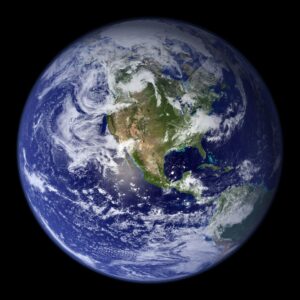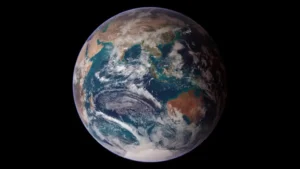The Moon’s Slow Dance Away from Earth
The Moon has been a constant companion to Earth for billions of years, inspiring artists, poets, and scientists alike. But what if this celestial body, so integral to our nights and tides, is slowly drifting away from us? Recent research from the University of Wisconsin-Madison has revealed that the Moon is indeed receding from Earth at a steady rate of approximately 3.8 centimeters per year. This gradual separation is not just a fascinating astronomical fact — it has profound implications for the length of our days on Earth.
The Science Behind the Drift
Gravitational Interactions and Tidal Forces

The primary driver behind the Moon’s recession is the gravitational interaction between Earth and the Moon, particularly the tidal forces exerted by both bodies. These tidal forces create friction, which in turn affects the rotational speed of Earth and the orbital distance of the Moon. Essentially, as the Moon pulls on Earth’s oceans, it causes a transfer of angular momentum, leading to a gradual increase in the distance between the two celestial bodies.
Stephen Meyers, a professor of geoscience at the University of Wisconsin-Madison, explains it with an analogy: “As the moon moves away, the Earth is like a spinning figure skater who slows down as they stretch their arms out.” This process, while slow, is continuous and has been occurring for billions of years.
Ancient Rocks and Modern Techniques

To understand the historical context of this phenomenon, the research team examined rocks from a formation aged at 90 million years. Using a technique known as astrochronology, which allows scientists to study ancient geological time scales, the researchers were able to trace the Earth-Moon system’s history over an extensive period. Their findings indicate that 1.4 billion years ago, a day on Earth lasted just over 18 hours. The increasing length of days over time can be directly linked to the Moon’s gradual drift away from Earth.
The Implications of a Longer Day
A Day That Lasts 25 Hours

If the current rate of the Moon’s recession continues, it is projected that in approximately 200 million years, an Earth day will last 25 hours. This change, although seemingly small, could have significant impacts on various aspects of life on our planet. The lengthening of days could affect natural cycles, such as circadian rhythms in humans and animals, as well as ecological and environmental patterns.
The study’s findings highlight the dynamic nature of Earth’s relationship with its satellite. While the Moon’s recession has been known for decades, this research delves deeper into the geological and historical aspects, offering a more comprehensive understanding of the phenomenon.
Impact on Earth’s Rotational Speed
The gradual lengthening of days is a result of Earth’s rotational speed slowing down. This deceleration is caused by the transfer of Earth’s rotational energy to the Moon’s orbital energy, propelling the Moon further away. This process is influenced by various factors, including the Earth’s rotational speed, tidal forces, and even continental drift.
Also Read: https://newsreporto.com/the-first-satellite-launched-a-historic-milestone/
Historical Context and Geological Evidence
Tracing the Earth-Moon System
The research team at the University of Wisconsin-Madison focused on examining ancient geological formations and sediment layers to trace the history of the Earth-Moon system. Their work reveals that while the current rate of the Moon’s recession is relatively stable, it has fluctuated over geological timescales. These fluctuations are attributed to changes in Earth’s rotational speed and continental configurations.
By studying ancient rocks and sediment layers, scientists can piece together the complex history of Earth’s relationship with the Moon. This historical perspective provides valuable insights into how the Earth-Moon system has evolved over billions of years and what we might expect in the future.
Future Implications and Considerations
Long-Term Changes to Earth’s Environment

The gradual lengthening of days due to the Moon’s recession will have long-term implications for Earth’s environment and ecosystems. Changes in the length of days could affect biological rhythms, including sleep patterns, feeding cycles, and reproductive behaviors in both humans and animals. These alterations could, in turn, impact ecological balance and biodiversity.
Additionally, the shift in day length could influence climate patterns and weather systems. The distribution of solar energy across the planet would change, potentially leading to variations in temperature and precipitation patterns. These environmental changes could have far-reaching effects on agriculture, water resources, and overall human livelihood.
Adapting to a New Day
While the prospect of a 25-hour day is far in the future, it raises interesting questions about how humanity and life on Earth will adapt to this change. Advances in technology and science may provide solutions to mitigate the impacts of longer days, such as artificial lighting and climate control systems. However, understanding and preparing for these changes will require continued research and innovation.
The Broader Significance of the Study
Advancing Scientific Knowledge
The University of Wisconsin-Madison’s study contributes significantly to our understanding of the Earth-Moon system and the long-term dynamics of our planet. By combining geological evidence with advanced analytical techniques, the researchers have provided a detailed and nuanced view of how the Moon’s recession affects Earth. This knowledge not only enhances our comprehension of celestial mechanics but also informs broader scientific inquiries into planetary evolution and dynamics.
Interdisciplinary Collaboration
The study’s success highlights the importance of interdisciplinary collaboration in scientific research. Geoscientists, astronomers, and other specialists worked together to uncover the intricate details of the Earth-Moon relationship. This collaborative approach is essential for addressing complex scientific questions and advancing our understanding of the natural world.
The revelation that the Moon is gradually drifting away from Earth, potentially leading to 25-hour days in the distant future, is both fascinating and profound. This finding underscores the dynamic and ever-changing nature of our planet’s relationship with its satellite. As we continue to explore and understand these celestial dynamics, we gain valuable insights into the past, present, and future of our world.
The University of Wisconsin-Madison’s study not only deepens our understanding of the Earth-Moon system but also highlights the importance of scientific inquiry and interdisciplinary collaboration. As we look to the future, the knowledge gained from this research will be instrumental in preparing for and adapting to the long-term changes that lie ahead.


1 thought on “Moon Drifting Away: Earth’s Days to Reach 25 Hours”